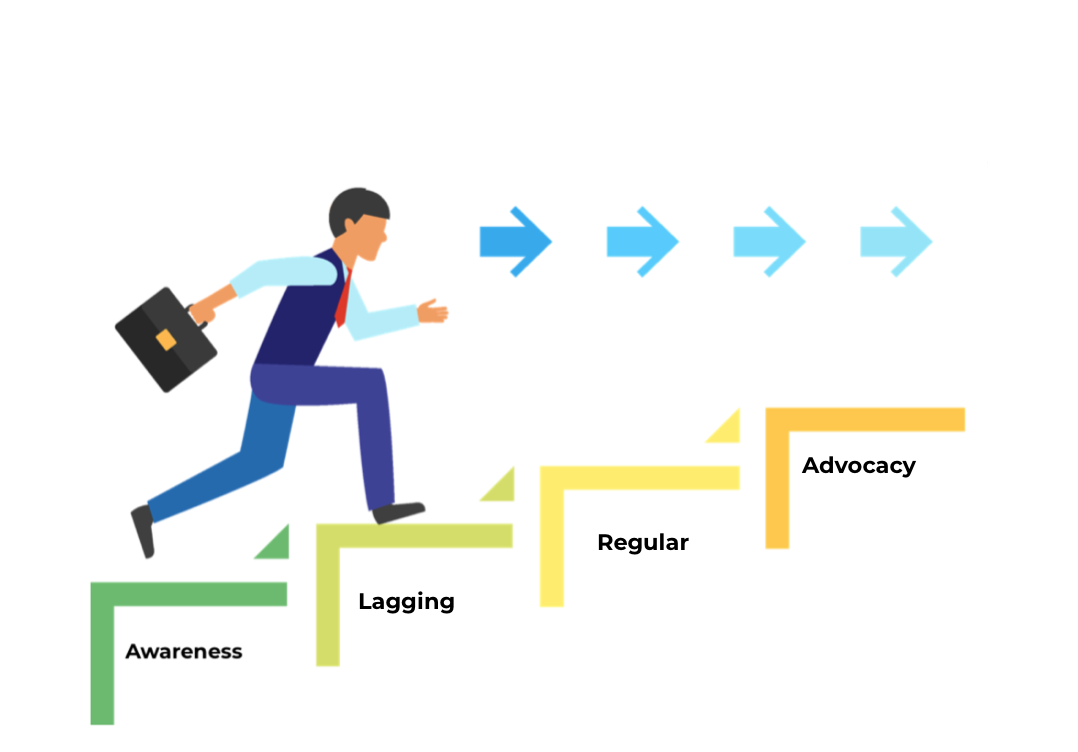
A successful commercial strategy begins with knowing your customers. For pharmaceutical companies, having an in-depth understanding of the attitudes that individual healthcare providers (HCPs) have towards your products can empower you to tailor your commercial efforts to meet their unique needs.
The brand adoption ladder is an important industry-wide tool that serves this purpose. Put simply, it is a systematic framework that determines how strongly potential customers have “bought into” your product by ranking them on a scale from being unaware of its presence on the market to acting as a strong advocate among their peers. This can complement other HCP profiling approaches, such as creating a digital persona to ascertain their communication preferences and determining their prescription potential.
Locating where an HCP is on the brand adoption ladder serves a critical commercial purpose. It can offer key insights into which exact messages to send out to optimally engage with an individual, thereby allowing you to efficiently allocate your resources. For instance, an HCP may have a high prescription potential due to their large patient population. However, their brand adoption ladder rating reveals that they are only a “trialist” of your product. Based on these results, there is immense untapped potential.
With the right tools, you can identify these HCPs and subsequently determine the reasons for the low level of adoption – thereby allowing you to specifically craft your campaigns to address their needs. For example, the aforementioned HCP might be worried about the potential side effects in a patient population with high co-morbidities. Thus, it would be advisable to share positive clinical study results relating to such patient groups.
For pharmaceutical companies to leverage the full potential of the brand adoption ladder and create more effective sales and marketing campaigns, it’s important to rate as many HCPs as you can to gain a full overview of the entire landscape. The information also needs to be as up to date as possible to ensure accuracy.
However, many ratings are gleaned from analogue assessments by sales representatives, and must be updated manually. This is an arduous, time-consuming process that often results in incomplete and outdated information.
To generate more comprehensive and accurate brand adoption ladder ratings, you can harness AI-based predictive technology that uses advanced data analytics.
This is exactly what a major pharmaceutical organisation recently did by partnering with Lynx Analytics.
As part of the pilot study, Lynx Analytics developed a machine-leaning-based recommendation engine that classifies HCPs based on factors including their interaction patterns with the pharmaceutical company, socio-demographic data, online behaviour and relevant sales data. After analysing this information, the software suggests a brand adoption ladder ranking for a specific HCP, which the sales representative can choose to accept or decline.
Such digital, data-driven technology has the ability to substantially improve the quality of customer profiles. It directs sales representatives to HCPs with brand adoption ladder figures that are likely outdated or missing altogether, and allows them to plug these gaps.
During the pilot study, the share of sales representatives making an update to the brand adoption ladder rating of at least one of their target HCPs increased threefold. Similarly, the share of overall brand adoption ladder figures that were updated during the pilot study was triple compared to that of a control group.
The recommendation engine also reduced the time that sales representatives spent on administrative tasks, such as manually updating data in CRM systems. Consequently, 83% of the participating sales representatives indicated that they would recommend this tool, and the organisation is now in the process of rolling it out across all of its sales offices. Indeed, by leveraging data analytics to optimise your brand adoption ladder ratings, you can gain more holistic and accurate insights into your potential customers – which can in turn drive better commercial results.
This is the second in a three-part series of articles on best practices for sales and marketing analytics in the pharmaceutical sector.
